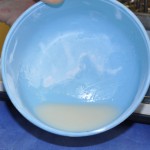Background: Excessive flatness of the back of the head can affect women and men equally. While shorter hairstyles reveal the shape of the back of the head most clearly, women with longer hair can be similarly affected and use various hairstyling methods to camouflage it.

Case Study: This 35 year-old male had long been bothered by the flatness of the back of his head. It had been present since birth and he felt that the shape of the back of his head was unusual and out of proportion to the rest of his skull shape. Building up the back of his head would help give him a more normal shape.

PMMA bone cement remains an historic and proven method of occipital augmentation for treatment of moderate degrees of back of the head flatness. Because the cement must be placed as an initial putty and then shaped after application, it requires an open approach with careful attention to its symmetry of shape and edge transitions. Because the cement is initially ‘soft’ it has a limited ability to create much scalp push. This limits the amount that can be placed to 60 to 90 grams through more limited scalp incisions and flap elevations.
Case Highlights:
1) Flatness of the back of the head can be corrected by a variety of onlay augmentation methods.
2) The use of PMMA bone cement is the most cost effective form of occipital cranioplasty.
3) PMMA cement is useful for small to moderate amounts of occipital augmentation requirements.
Dr. Barry Eppley
Indianapolis, Indiana



